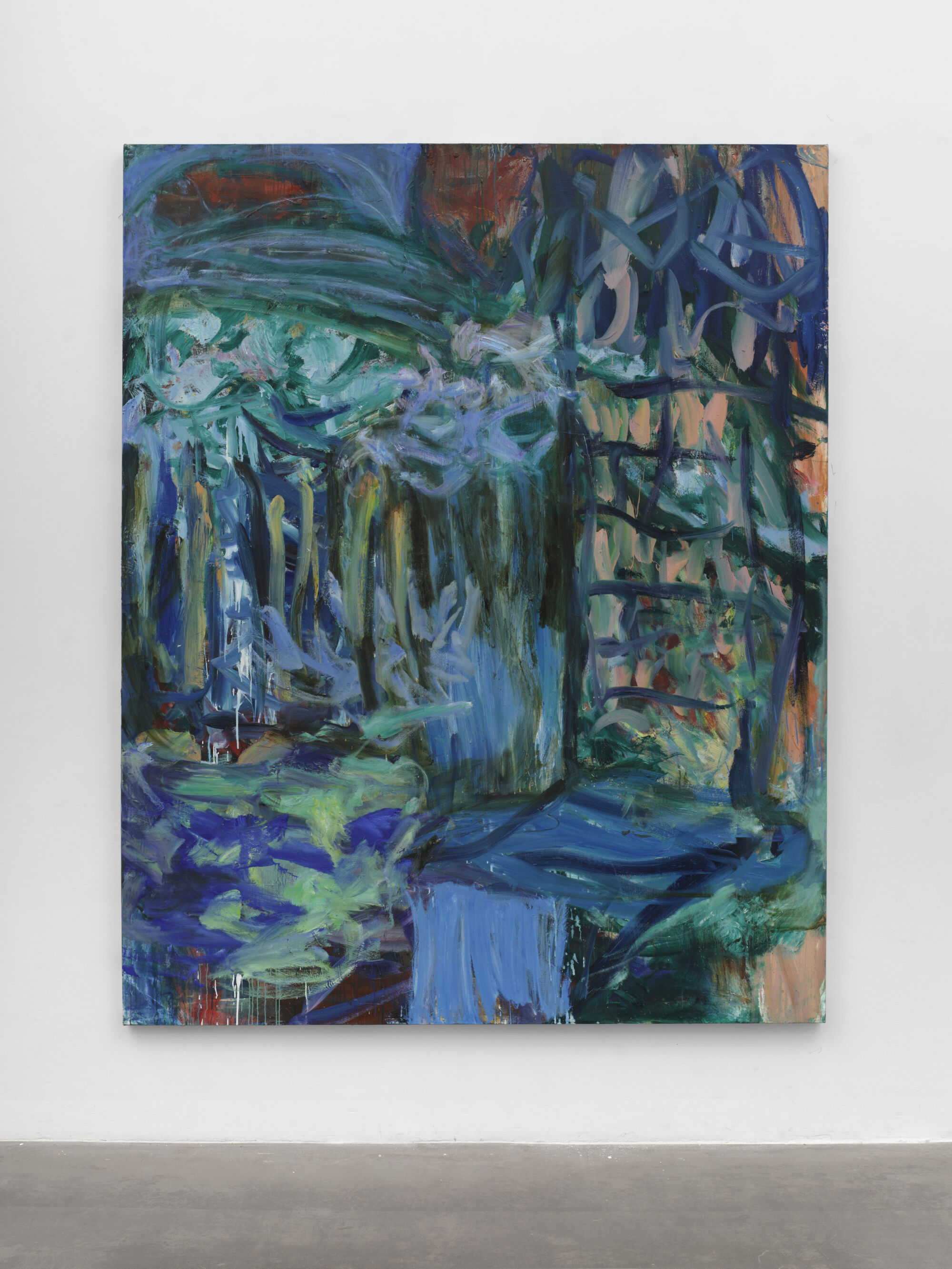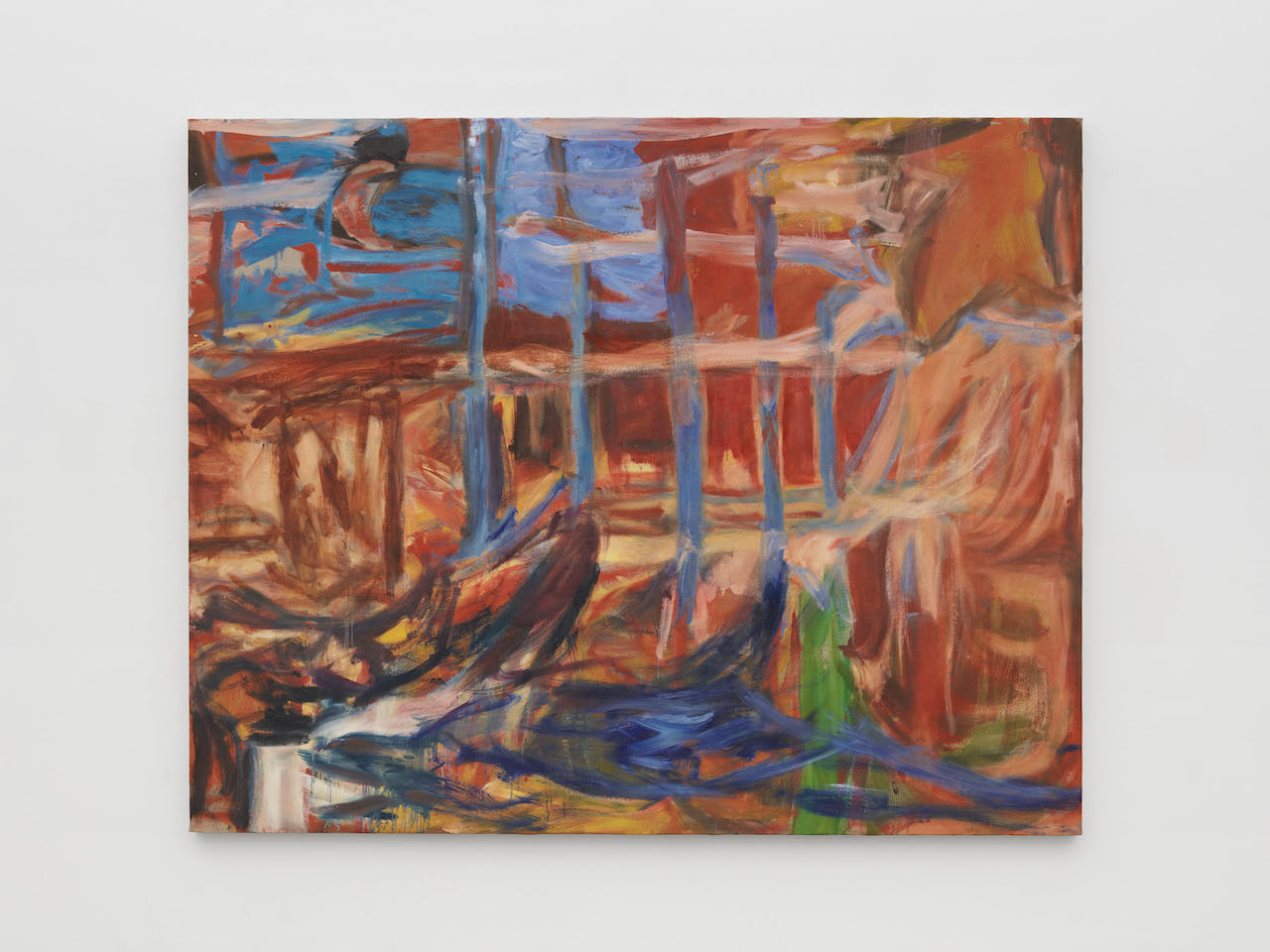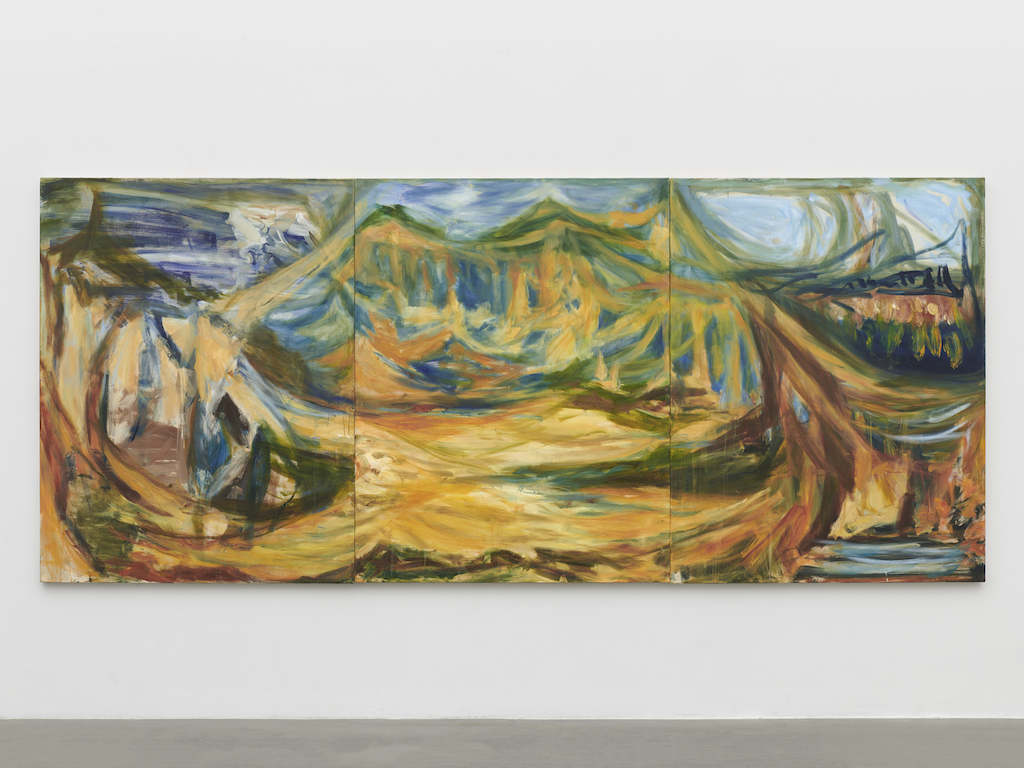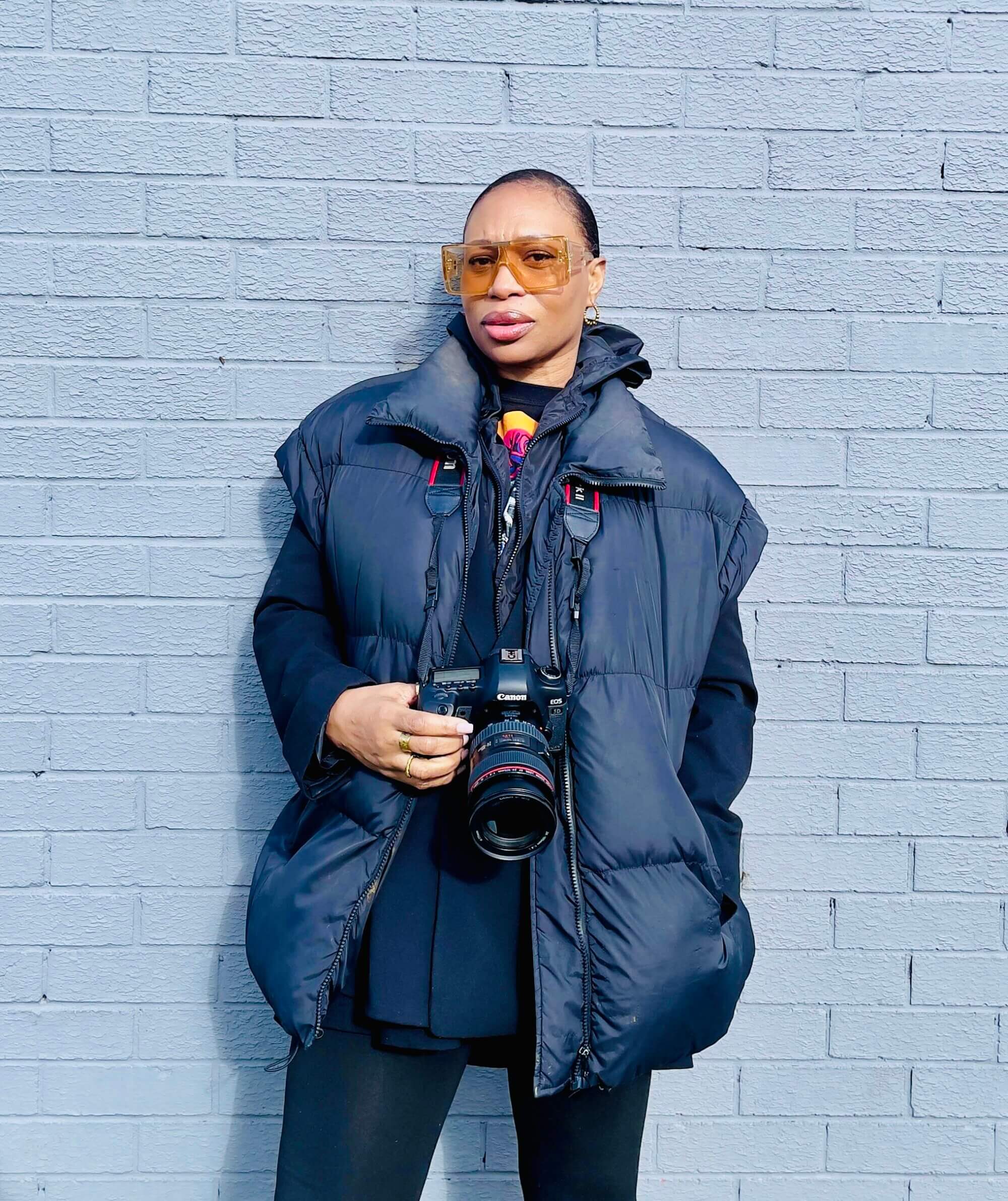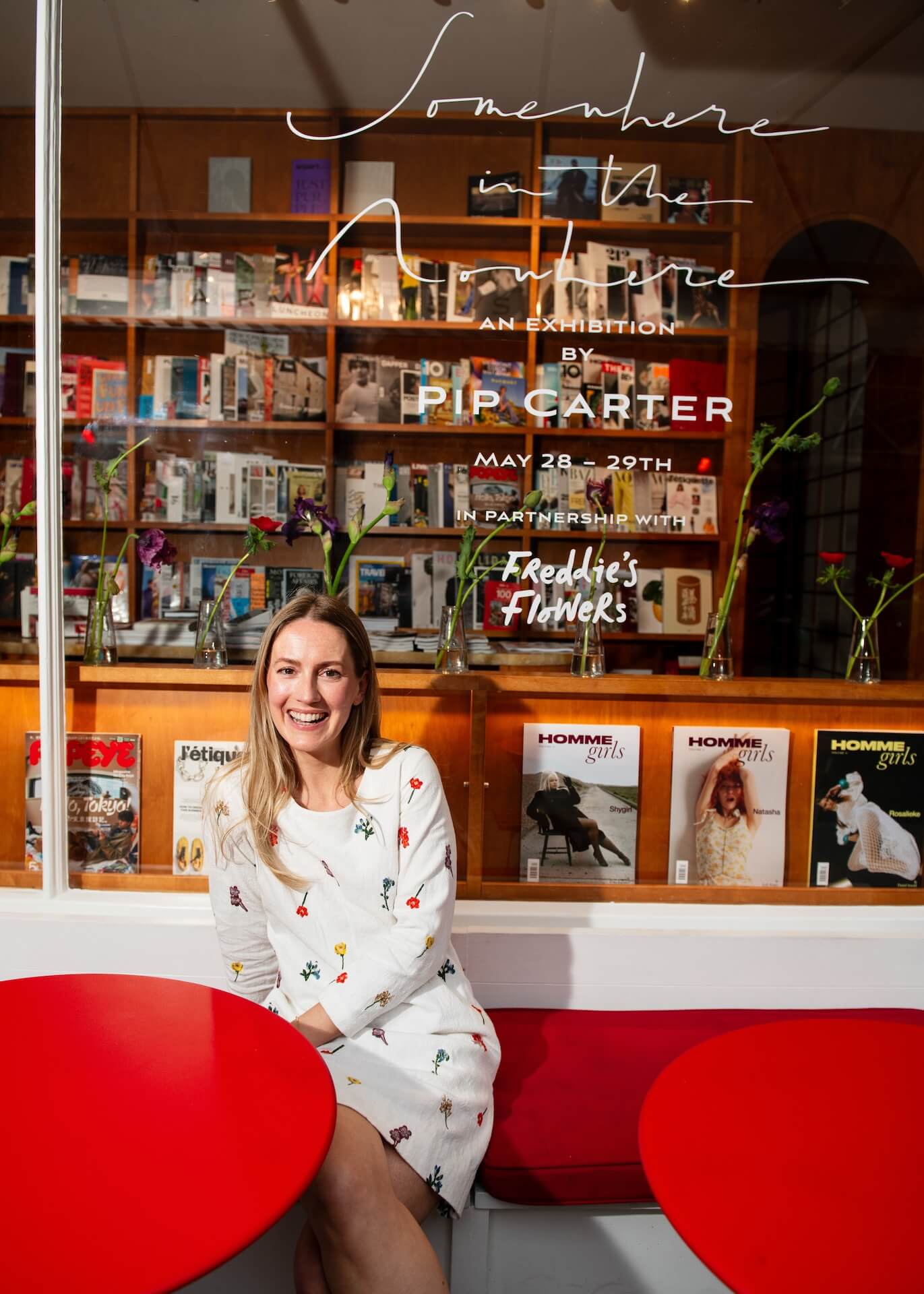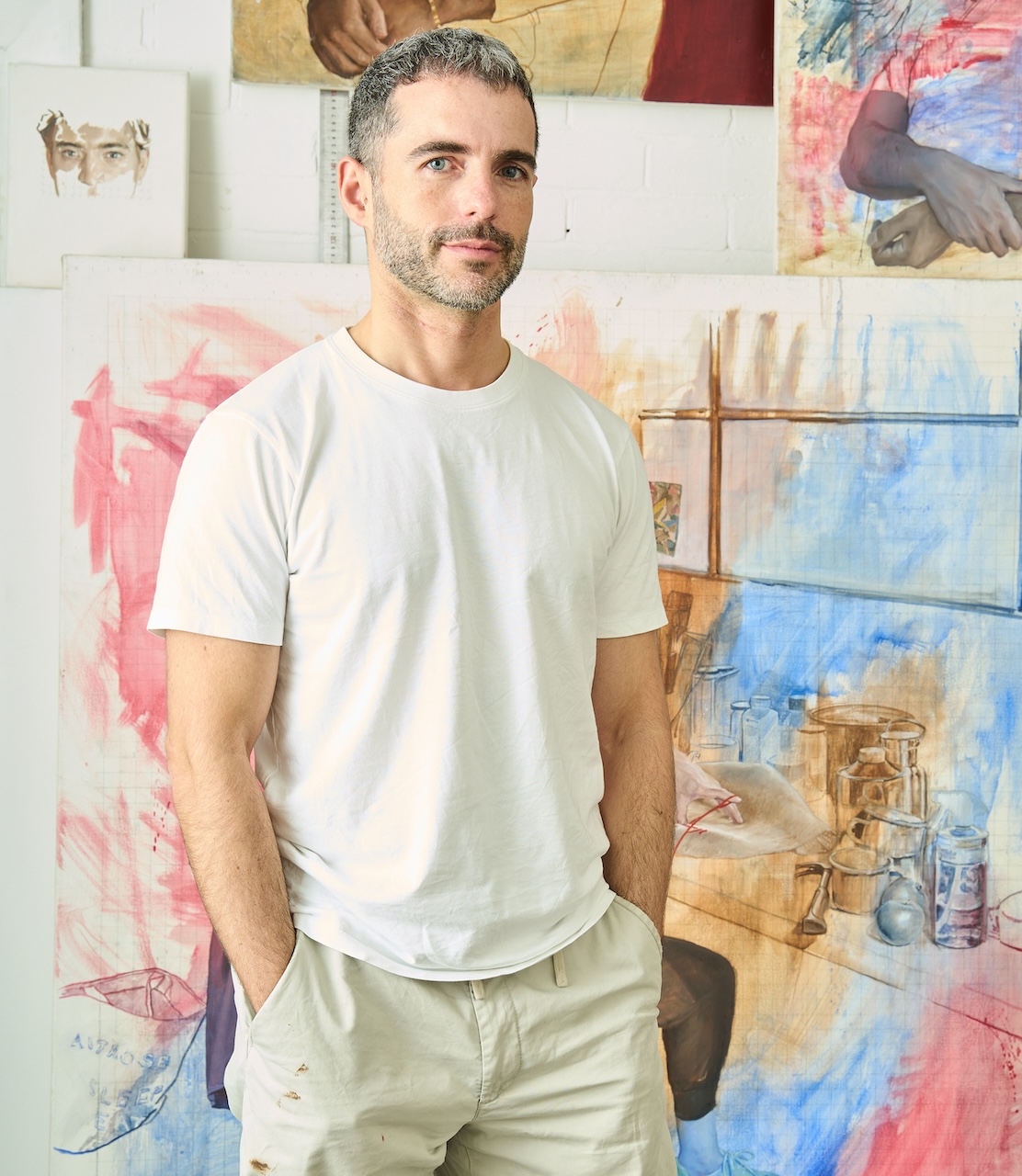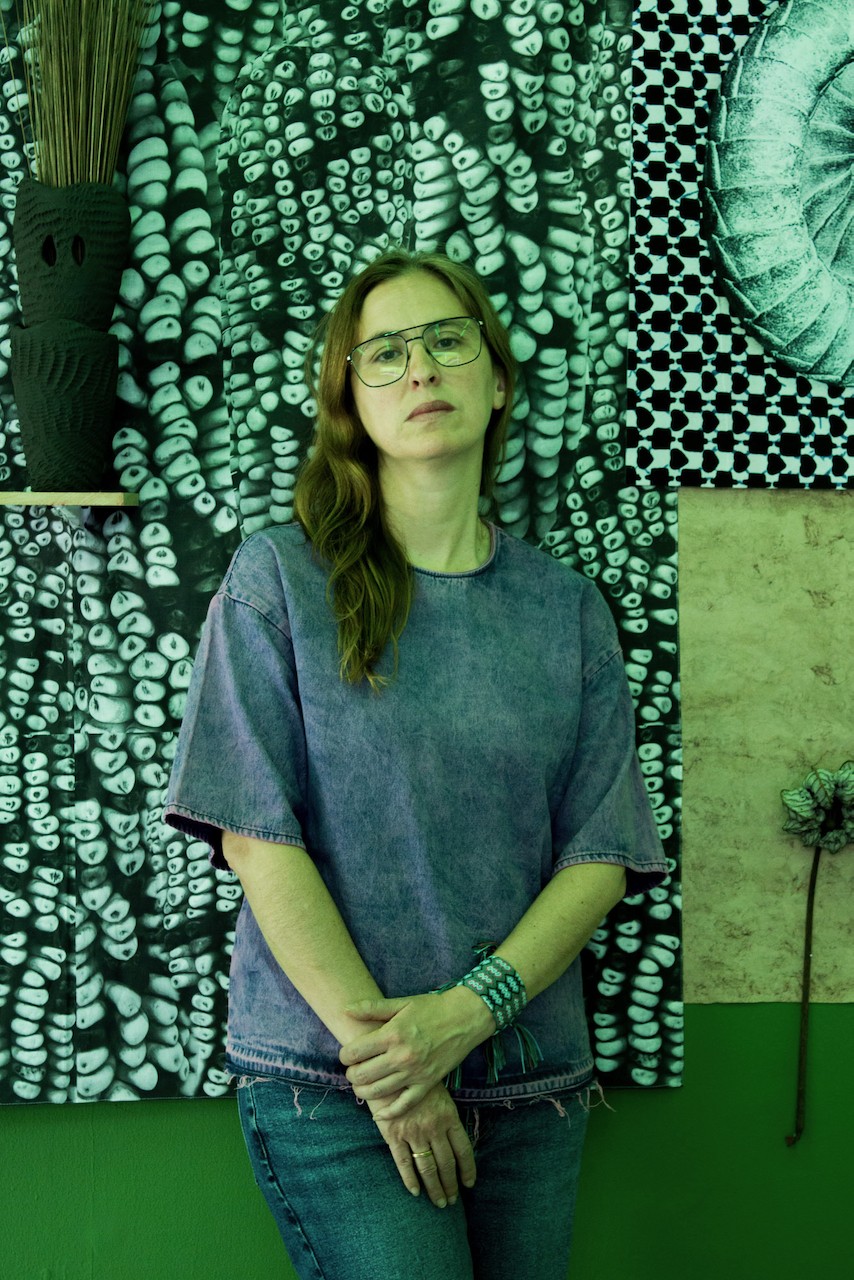Spotlight
Spotlight Artist Sarah Cunningham
Championed by Elissa Goldstone
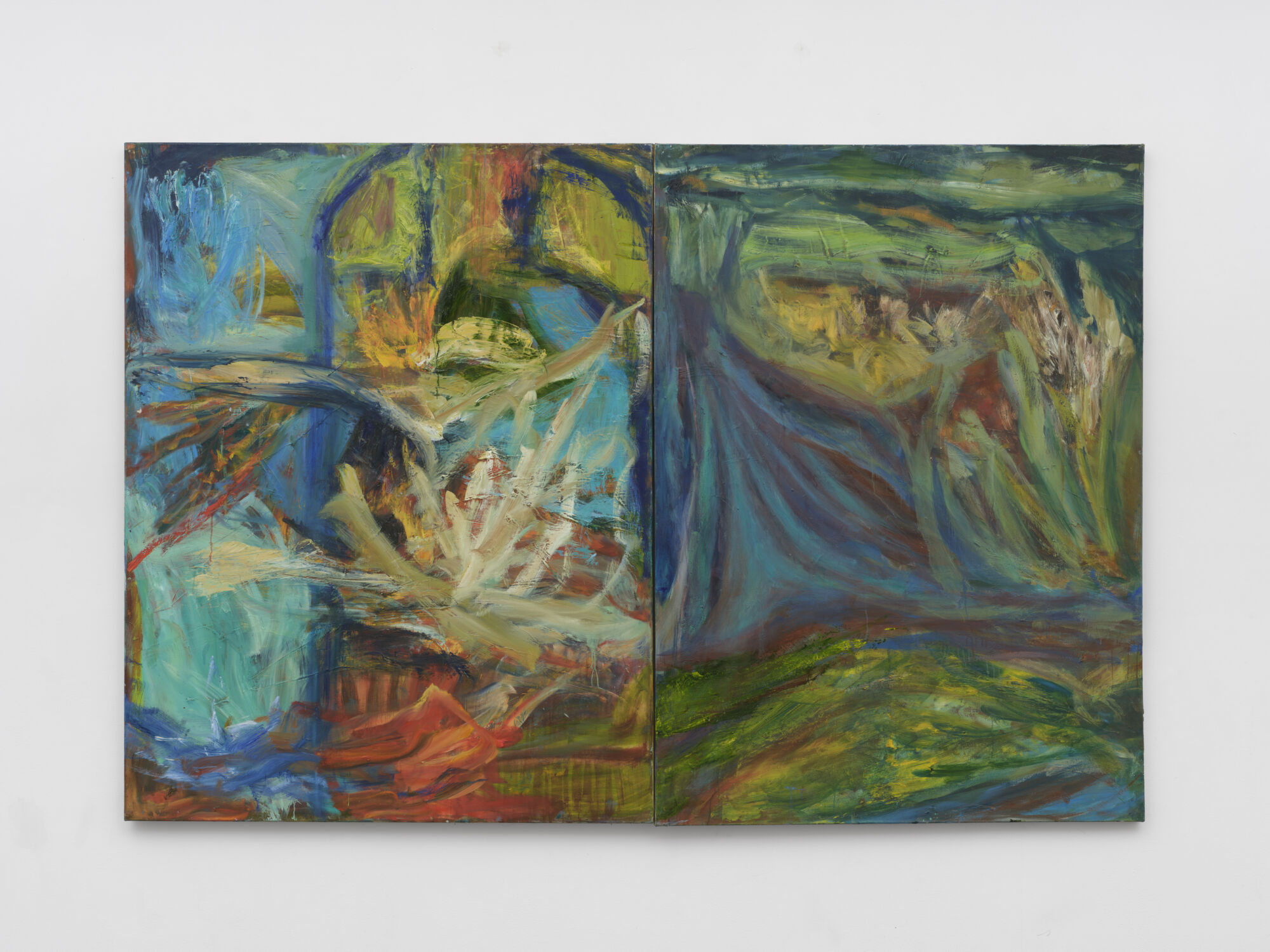
Above Sarah Cunningham, Via Lucis (Diptych), 2023. Oil on canvas. Overall: 180 x 270 x 4 cm. Overall: 70 7/8 x 106 1/4 x 1 5/8 in. © Sarah Cunningham, courtesy Lisson Gallery
ONES TO
WATCH
WATCH
ONES TO
WATCH
WATCH
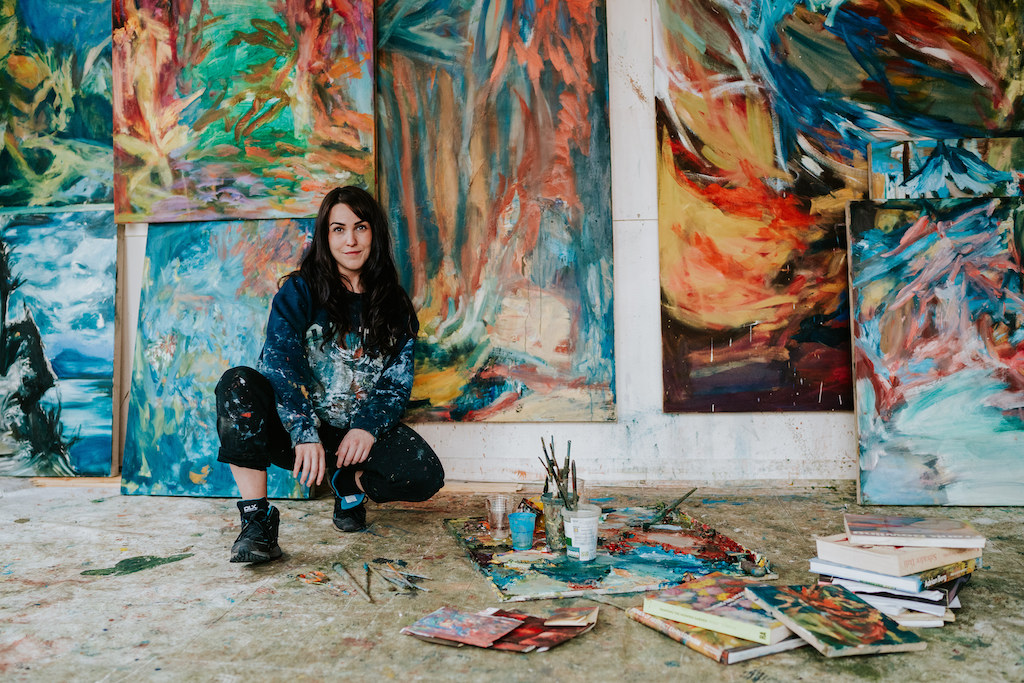
Above Sarah Cunningham
Interview
Sarah Cunningham
Interview
Sarah Cunningham
You can easily get lost in the wild gestures of Sarah Cunningham’s paintings, which evoke imaginary forestscapes and kaleidoscopic environments. That was certainly the experience of her champion for The Wick, Elissa Goldstone, when she first encountered her work at her Royal College of Art degree show a few years ago. “I was utterly absorbed by her use of paint and her approach to her canvas,” says the Lisson Gallery director.
The artist builds up layer upon layer of colour until finally her bucolic visions emerge. Her fluid scenes are currently in the Lisson group show, Accordion Fields (until 4 May), alongside those of Varda Caivano, Dexter Dalwood and Pam Evelyn, among others. Together they explore the indeterminate, liminal and multi-dimensional notions of space, influenced by London, the city in which they all studied.
The artist builds up layer upon layer of colour until finally her bucolic visions emerge. Her fluid scenes are currently in the Lisson group show, Accordion Fields (until 4 May), alongside those of Varda Caivano, Dexter Dalwood and Pam Evelyn, among others. Together they explore the indeterminate, liminal and multi-dimensional notions of space, influenced by London, the city in which they all studied.
Goldstone says: “Sarah creates a very honest and charged experience in her paintings. They engage in a deeply expressive language that I would describe as ‘the familiar’ – like a universally experienced moment captured in all its vast and wild ways. She really pushes her practice and responds to what transpires in the process, which I love.”
Cunningham’s work evolves from intense observation of her environment. She explains: “I tend to go back to the same motifs and subjects in nature over and over. That repetition allows me to explore these very deeply, from different perspectives. There is always something more to be discovered.”
The artist melds these observations with her own personal experiences in nature, as well as dreams, art history, myths and literature. “I also collect found images and examine light phenomena in my own film photographs,” she says. “I use these references like a repository: things sit there, percolating for months, sometimes years. This is a way of processing my life. People always talk about abstraction and figuration, but actually, it’s a question of, how do you have both in the same place? And what is this sense of place in the work?”
Cunningham spends a lot of time looking at other artists’ paintings, “from Turner’s late watercolours and preliminary sketches from 1840 onwards, to Goya’s Black Paintings, and Bonnard’s intensely coloured canvases. De Kooning and Gorky also paved the way for decades of expressive figurative artists. I love how Suzanne Jackson and Vivian Suter go about taking painting somewhere else. I hold a lot of paintings very close to my heart.”
The artist says her greatest achievement so far has been receiving the Ali. H Alkazzi Scholarship award in 2019, which gave her the chance to study for an MA in painting at the Royal College of Art. Since then, success has come quickly, with her work being included in exhibitions in London, Aspen, Berlin, Los Angeles, New York, and Vancouver. Head down to the Lisson Gallery to enjoy her works in all their rich intensity.
Cunningham’s work evolves from intense observation of her environment. She explains: “I tend to go back to the same motifs and subjects in nature over and over. That repetition allows me to explore these very deeply, from different perspectives. There is always something more to be discovered.”
The artist melds these observations with her own personal experiences in nature, as well as dreams, art history, myths and literature. “I also collect found images and examine light phenomena in my own film photographs,” she says. “I use these references like a repository: things sit there, percolating for months, sometimes years. This is a way of processing my life. People always talk about abstraction and figuration, but actually, it’s a question of, how do you have both in the same place? And what is this sense of place in the work?”
Cunningham spends a lot of time looking at other artists’ paintings, “from Turner’s late watercolours and preliminary sketches from 1840 onwards, to Goya’s Black Paintings, and Bonnard’s intensely coloured canvases. De Kooning and Gorky also paved the way for decades of expressive figurative artists. I love how Suzanne Jackson and Vivian Suter go about taking painting somewhere else. I hold a lot of paintings very close to my heart.”
The artist says her greatest achievement so far has been receiving the Ali. H Alkazzi Scholarship award in 2019, which gave her the chance to study for an MA in painting at the Royal College of Art. Since then, success has come quickly, with her work being included in exhibitions in London, Aspen, Berlin, Los Angeles, New York, and Vancouver. Head down to the Lisson Gallery to enjoy her works in all their rich intensity.
About the champion
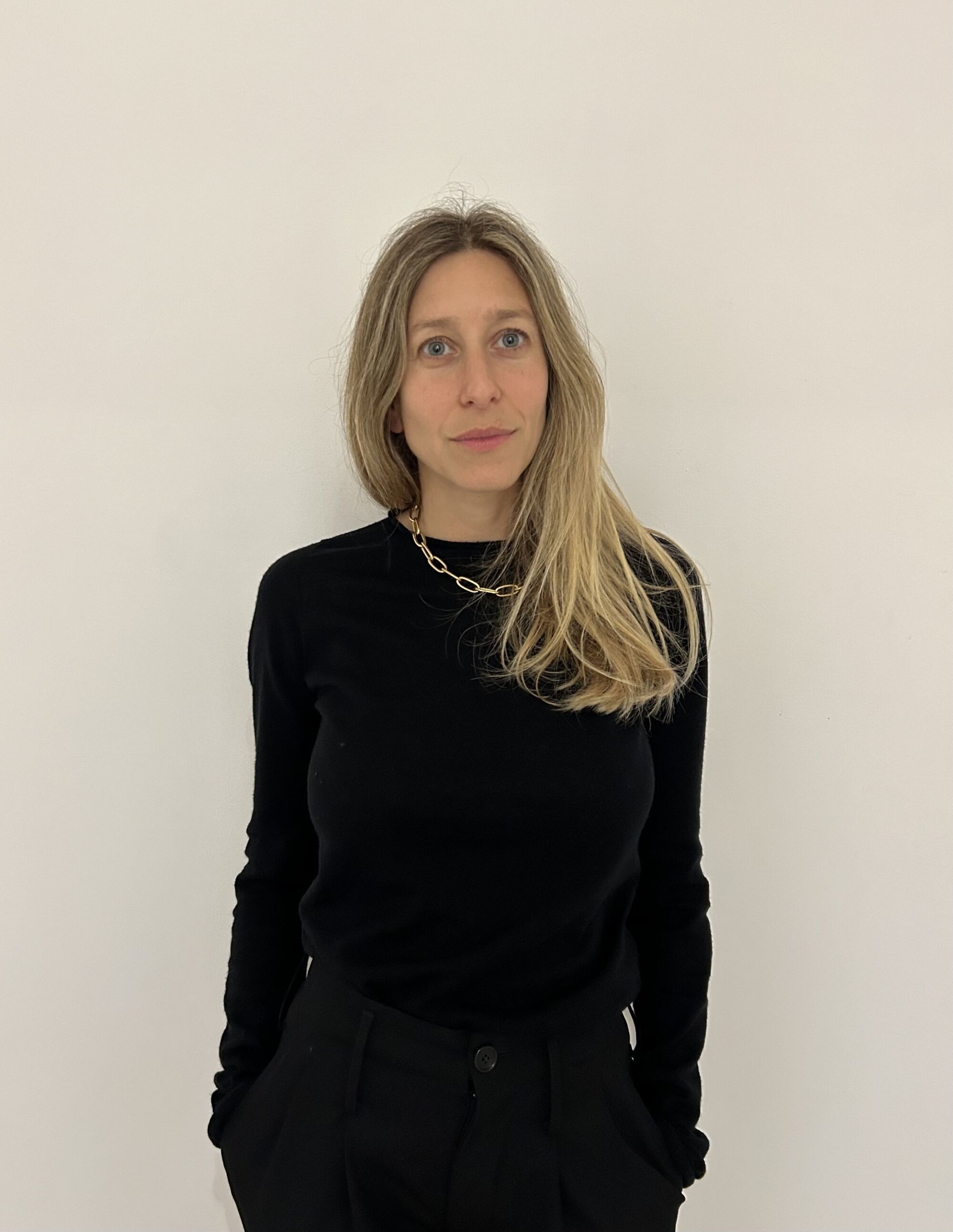
Elissa Goldstone is a Director at Lisson Gallery, based in London, working with artists and institutions internationally. Prior to moving to the UK, she spent nearly a decade as Curator and Director of Exhibitions at Socrates Sculpture Park and Creative Time, both in New York, where she realised ambitious exhibitions in the public realm and supported access to the arts across the city.
“Sarah creates a very honest and charged experience in her paintings. They engage in a deeply expressive language that I would describe as ‘the familiar’ – like a universally experienced moment captured in all its vast and wild ways. She really pushes her practice and responds to what transpires in the process, which I love.”

Above Sarah Cunningham, Treading Water, 2024. Oil on canvas. 320 x 240 x 4 cm, 126 x 94 1/2 x 1 5/8 in. © Sarah Cunningham, courtesy Lisson Gallery

Above Sarah Cunningham, Via Lucis (Diptych), 2023. Oil on canvas. Overall: 180 x 270 x 4 cm. Overall: 70 7/8 x 106 1/4 x 1 5/8 in. © Sarah Cunningham, courtesy Lisson Gallery
